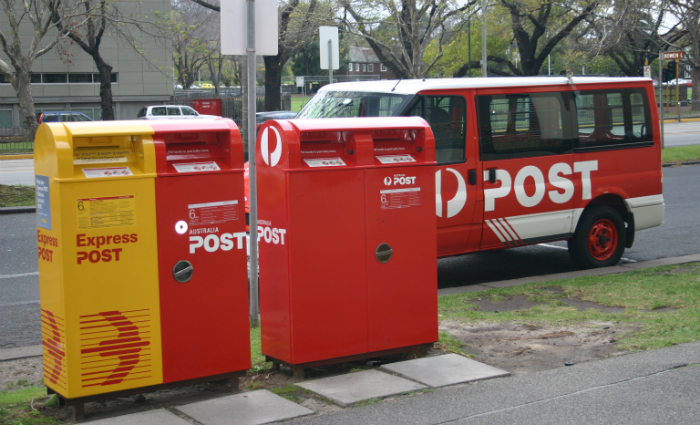
Printers and mailhouses are condemning Australia Post’s plan to raise bulk mail prices by seven per cent, amid fears it will drive advertisers further away from direct mail.
The second price hike in 11 months takes effect on March 2, and sees small-sized presort mail, the most heavily used by printers, rise by 7.3 per cent for same state and 7.1 per cent for interstate on regular delivery, and 6.8 and 6.5 for priority.
The mail carrier is raising the prices after losing $328m on letters last financial year and delivering less mail to more locations every year.
[Related: More Australia Post news]
OnePoint chief executive Kerim El Gabali says Australia Post is ‘cutting off its nose to spite its face’ with the price hikes as higher prices lead to lower volumes which leads to further price hikes.
“It’s insane, advertisers will absolutely cut volumes or get out of direct mail completely,” he says.
“I makes it much more difficult for printers as it cuts down on the number of clients we can offer direct mail to because the return on investment has to be really high to justify it.
“Australia Post is basically saying it doesn’t want to do mail anymore, but I would love to see what would happen if it dropped the price by half for six months.
“I bet the volume would rise enough to cover its costs because direct mail is such an effective medium.”
El Gabali says his multichannel marketing firm is already feeling the pinch, but is not hurting as much as higher volume producers as it focuses on personalised runs of less than 3000.
Integrated Mailing Services (IMS) managing director Buzz Borsitzky says there is no question advertisers are reducing volumes, by as much as 13 per cent a year, due to rising delivery costs.
Borsitzky says many mailhouse owners are resigned to dealing with annual or even biannual increases in the future, and there is nothing the industry can do about it.
“The PIAA is trying but Australia Post can’t keep losing hundreds of millions a year and it is in an awkward positon, but the increases are definitely excessive especially as CPI is very low right now,” he says.
“Lots of work has also gone to China because we can’t compete with the labour costs and postage from China is a fraction of even same state delivery here. Clients like the AFL and NRL are saving $80-90,000 a year going offshore.”
Borsitzky says the crash is even worse in transactional mail and Fuji Xerox Document Management Services in particular is taking huge volume hits that have seen it shed significant staff in recent years.
“The industry has changed, everyone needs to diversify and add value to their business, everything has to be data-based. Envelope stuffers just can’t survive anymore,” he says.
He says IMS has installed iGens and other digital machines to offer more complete solutions to clients beyond just being a mailhouse.
[Related: More direct mail news]
PIAA chief executive Bill Healey is concerned that Australia Post still has no oversight of its pricing despite a senate committee being ‘highly critical’ of its management and recommending prince increases be reviewed by the ACCC.
“A monopoly, particularly a government-owned one, should not be able to set prices without oversight, that’s nonsense,” he says.
“It’s painful, but I think this was expected, although the magnitude has shocked people. If all they do is increase prices, all that will happen is it will hasten the demise of direct mail, there’s a danger the whole system will become unviable.
“But I think Australia Post will continue to up its prices until its business model is subjected to critical analysis.”
Healey says the alliance between the PIAA, mailhouses, unions, and post office owners is trying to get Australia Post to collaborate with stakeholders to find a solution.
“A more consultative approach could identify a range of opportunities to maintain the relevance of mail to the Australian economy that might surprise them,” he says.
He says using transactional mail to drive people to pay their bills online could help reduce the cost of processing paper-based payments while maintaining its use and giving the public what it wants.
“People forget about bills if they don’t have a letter,” he says.
Comment below to have your say on this story.
If you have a news story or tip-off, get in touch at editorial@sprinter.com.au.
Sign up to the Sprinter newsletter
